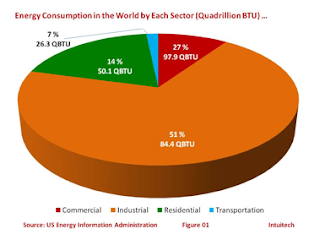Power To The Bottom | Newsweek International Edition | Newsweek.com
Power To The Bottom
Social enterprise has a soulmate in Web 2.0, a powerful new tool for bottom-up, collaborative innovation.
In Tajikistan, Georgetown graduate student Dan Zuckerman is the face of Kiva, a San Francisco-based microlending organization operating in a region that currently hums with nearly 3,000 Kiva-sponsored entrepreneurs. Zuckerman has to get to know them and act as their bridge to their remote lenders by sharing their stories, both with the people providing loans and with the local microcredit institution, MLF MicroInvest, which is Kiva's partner. In all of Tajikistan, he works alone. How does Zuckerman, 25, manage to cover all this ground without support staff and with a supervisor 11,000 kilometers away? Between field visits, he logs on to the Kiva Fellows wiki page, which allows him to tap into ideas about best practices from the experiences of Jara Small in Tanzania, Javed Rezayee in Afghanistan, Cynthia McMurry in Bolivia and the rest of the 100 Kiva Fellows dispersed among 45 countries. The wiki not only makes Zuckerman and his colleagues more effective, it also, as Kiva president Premal Shah puts it, gives them the ability to "co-create Kiva."
The rapidly expanding field of social enterprise has found a soulmate in Web 2.0. The Kiva Fellows' online workbook is an ongoing, communal work-in-progress, which is exactly what Kiva itself is. Running on a platform like Pbwiki, an online wiki-provider who offered Kiva its services for free, it demonstrates the new nature of social enterprise, in which change and growth start from the ground—a level heretofore known as "the bottom." A wiki is not a message board: content isn't simply added, it is edited, so only the most updated information remains on the page. The edit trail is still accessible but separate—no need for scrolling through lengthy back-and-forths before finding what you need.
Wiki technology is one part of the Web 2.0 boon to social enterprise, which, after two decades of importing ideas and practices from business, is now forging on across new terrain. The goal of business is "to capture a market," says Bill Drayton, founder and chairman of Ashoka, the oldest funding and support organization for social enterpreneurs. "A social entrepreneur's goal is to change the world. So it's inherently an open architecture." Now into that openness walks—a wiki. A platform for collaborative content, negotiable by everyone involved, gives rise to a community that largely regulates itself. Kiva grew so quickly, Shah says, "we couldn't scale fast enough until we created the Fellows program. The next question became, how do you keep these people in sync?" A single staff member manages the entire Fellows program, but once in the field, the Fellows learn by and large from one another, not headquarters. "The quality of what's on the wiki is much higher," adds Shah, "because it's coming from people in the field."
As social entrepreneurship expands to new sectors, so does bottom-up innovation; as the 2.0 model proliferates, it inspires new social enterprises. "Just ask yourself," says Pbwiki vice president Ramit Sethi, " 'What happens when information-sharing and collaboration becomes really easy?' " You get communities like PatientsLikeMe.com, made up of people who suffer from life-altering diseases—Lou Gehrig's disease, Parkinson's, HIV/AIDS and others—and who share the progress they're making with particular treatments. The idea is to "see everything everyone is trying," says cofounder and CEO Ben Heywood. Physicians and researchers log on to the site as well, quickly seeing results from treatments on a large, diverse group of patients. On the research end, too, the 2.0 model has invigorated collaboration: the Myelin Repair Foundation is a collective investigation of multiple sclerosis which relies on the open-source model, not only to spark ideas from all corners of the research community but to rally disparate resources to quickly turn good ideas into effective practice, on a substantial scale.
Four years ago, following a conversation with eBay founder Pierre Omidyar, Drayton hit upon a new philosophy: that of making "everyone a change-maker." But only in the age of online social networking, open platforms and Wikipedia did Ashoka and the rest of the growing movement begin to realize just what that philosophy could mean. (Empowering individuals has since become the cornerstone philosophy of the Omidyar Network, Omidyar's philanthropic firm that supports social enterprises, including PatientsLikeMe.com.)
Ashoka's newest Web initiative, change makers.net, is a marketplace of ideas to address social problems. Anyone can enter the "collaborative competitions," and others can critique the ideas. The author of a proposed initiative then modifies his strategy accordingly before a final vote. Winners get $5,000 in start-up funds and even greater exposure in the network and beyond. Greg Dees, professor at the Fuqua School of Business at Duke and a pioneering teacher of social enterprise, calls the site "a powerful innovation." It is, like many other 2.0 applications, an innovation for innovations.
Nearly 30 years since he began Ashoka, Bill Drayton is witnessing a transformation in the field he helped modernize. "This is the big change," he says, as he looks to a world of change-makers ready both to create and to collaborate—"a world where problems cannot possibly outrun the solutions." Even in the farthest reaches of Tajikistan.

Comments